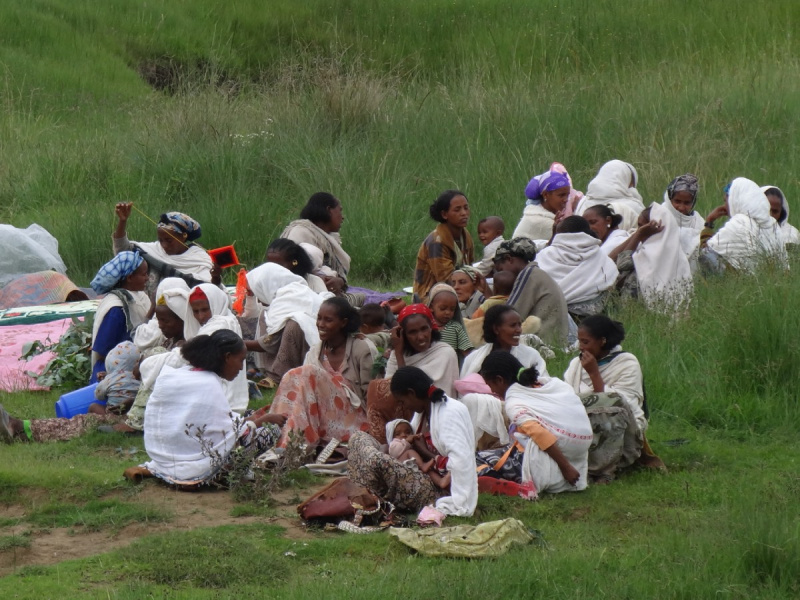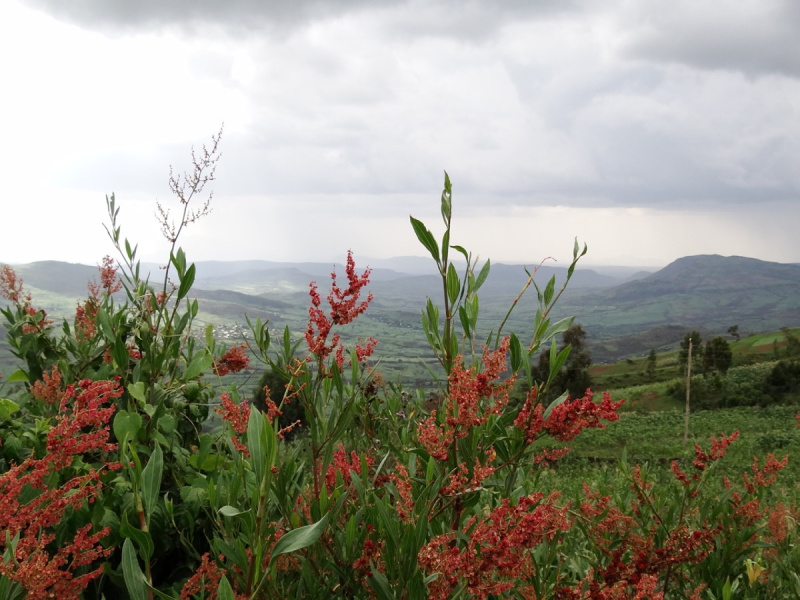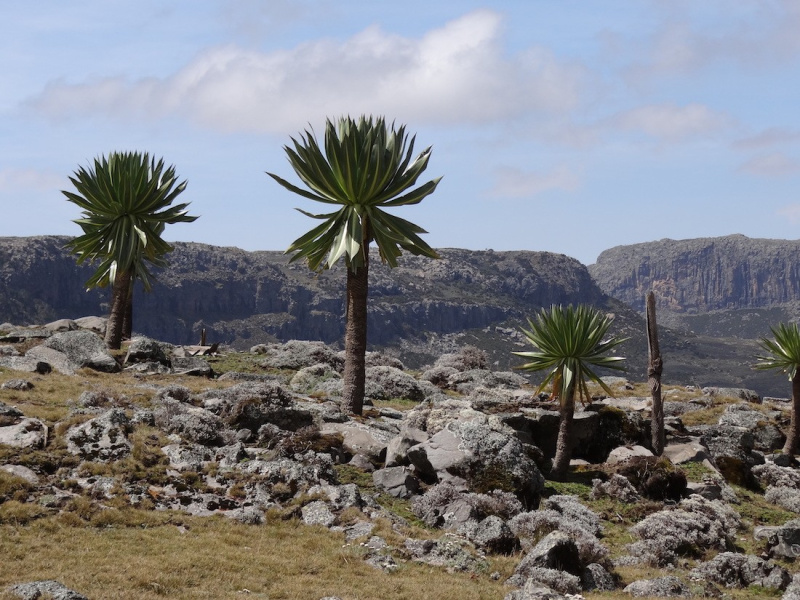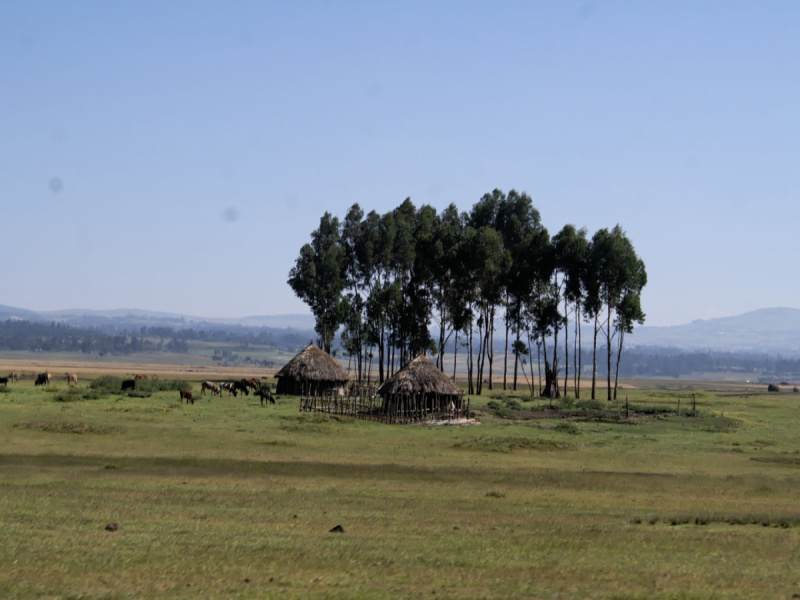About Ethiopia

Ethiopia is a country that offers great combinations of destinations and remains one of the countries on the African continent the richest historically and culturally. Land of contrasts and surprises, of remote and wild places, with a climate and landscapes more appreciable than those of all of southern Africa. Its fauna is the richest in all of East Africa.
Ethiopia is home to some of the most fascinating tribal groups and turns out to be a much richer country than many imagine.
Ethiopia is an ancient land of history and nature, full of unusual contrasts with a heritage dating back almost 60 centuries. Ethiopia is a land of mystery with unexplored regions.
In homage to this heritage, the United Nations Educational, Scientific and Cultural Organization (UNESCO) has included 10 Ethiopian sites in its declaration "World Heritage Sites”. Among these sites: Hadar, the “cradle of humanity” and more particularly with the discovery of “Lucy” 4 million year old hominid, the spectacular and robust Simien Mountains and the unrivaled architecture of the rock-hewn churches of Lalibela.
Perhaps unprecedented in its variations, experts recognize that Ethiopia has up to 16 different agro-climatic zones and ranks it as one of the top 12 countries in the world for its richness in biodiversity.
Beautifully lush Afro-Alpine moorland peaks reaching 4,620 meters above sea level while not far away lies an impressive contrast and sulfuric hell with the Danakil Depression and the dazzling Dallol located 100 meters below sea level. Lying in tropical regions and with an area of more than 1 million square kilometers, most of the country is consisting of airy plateaus, elevated and dissected by deep river gorges and bordered all around by arid plains.
The most remarkable valley on the planet is the Great Rift Valley which crosses Ethiopia and creates a chain of seven lakes, rich in all forms of life. Ethiopia's 9 national parks and 4 sanctuaries are known as much for their animal life as for these unique birds evolving in fabulous nature. An impressive number of fauna includes many endemic species: 31 of 277 mammals, including 16,861 birds, 24 of 63 amphibians, 9 of 210 reptiles and 4,150 fish. The flora is also interesting with at least 1,000 of the 7,000 plant species being restricted to Ethiopia. For entomology enthusiasts, 324 butterflies are recognized, 7 of which are said to be endemic.

The richness of cultural heritage comprising more than 88 linguistic groups, endows this ancient land with wonders. Approaching 90 million inhabitants, Ethiopia is the third most populous country in Africa, so there is an abundance of exotic costumes, ceremonies, colorful celebrations, arts, crafts, music and dance, each ethnic group with its distinct traditions and its ancestral customs and fascinating, which assimilate Ethiopia to an "Africa miniature".
Additional pleasure can always be found with its mild climate allowing Ethiopia to boast of having "13 months of sunshine". Mixing rain and good weather time, with all its varied and spectacular contrasts, Ethiopia is sure to create memories that satisfy not only the adventure-seeking traveler, but especially for all those who crave a enchanting new experience Taste Ethiopia, meet its people and your wish will be to return.


Formerly known as Abyssinia, this landlocked republic in East Africa is bordered to the north by Eritrea and Djibouti, to the east and southeast by Somalia, to the south by Kenya and to the west by Sudan. Ethiopia, for comparison, is five times the size of the United Kingdom, twice the size of France.
Its capital, Addis Ababa with its 4 million inhabitants, which is located in the middle of the country in the central mountains, at an altitude of more than 2300 meters is the 3rd highest capital in the world.
The central plateau dominates the landscape. It was formed by volcanic activity. This central plateau or Ethiopian highlands located on average at more than 2000 meters above sea level includes more than 20 peaks over 4000 meters above sea level.
Ethiopia is divided in two by the Great Rift Valley which extends from the Red Sea through the Danakil Depression the lowest point on Earth, to across southern Ethiopia and to southern Africa.
The two most important mountain ranges are in the Simien Mountains, north of Gondar and the Bale Mountains which lie in the highlands from south to east. east of the Great Rift Valley.
The highest peak is Mount Ras Deshen in the Simien Mountains at 4,620 meters above sea level, the fourth highest peak in Africa.
The mountains are also the source of many rivers, the most famous being the Blue Nile which rises at Lake Tana and provides most of the water of the Nile.

